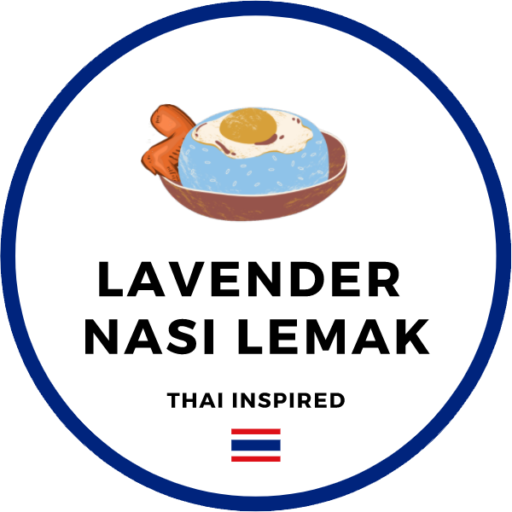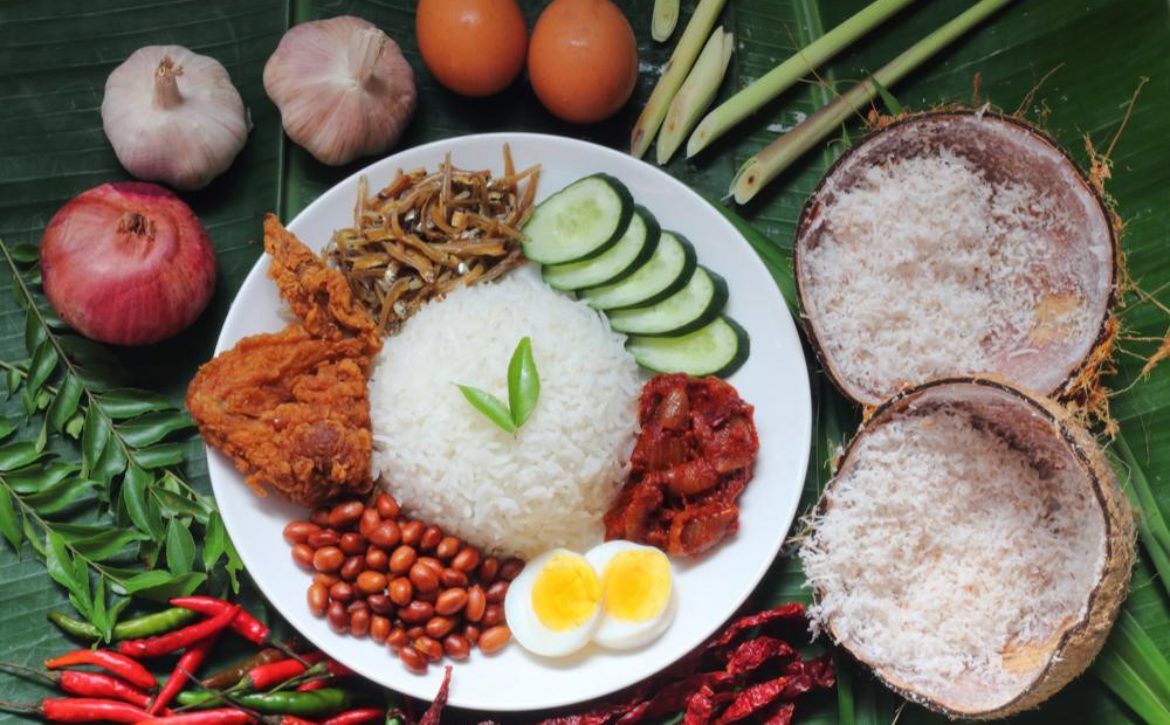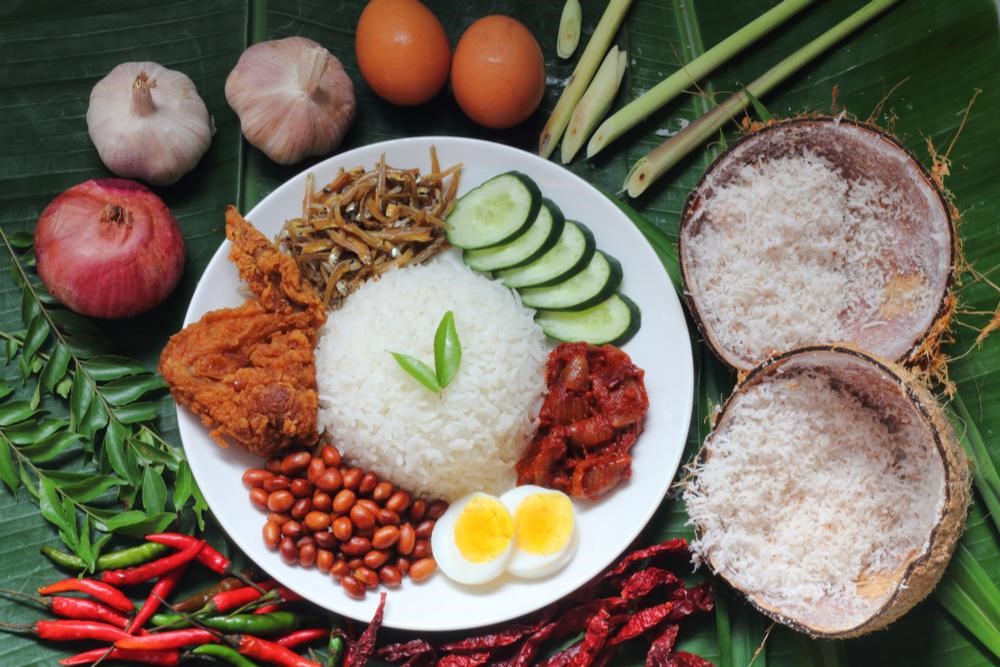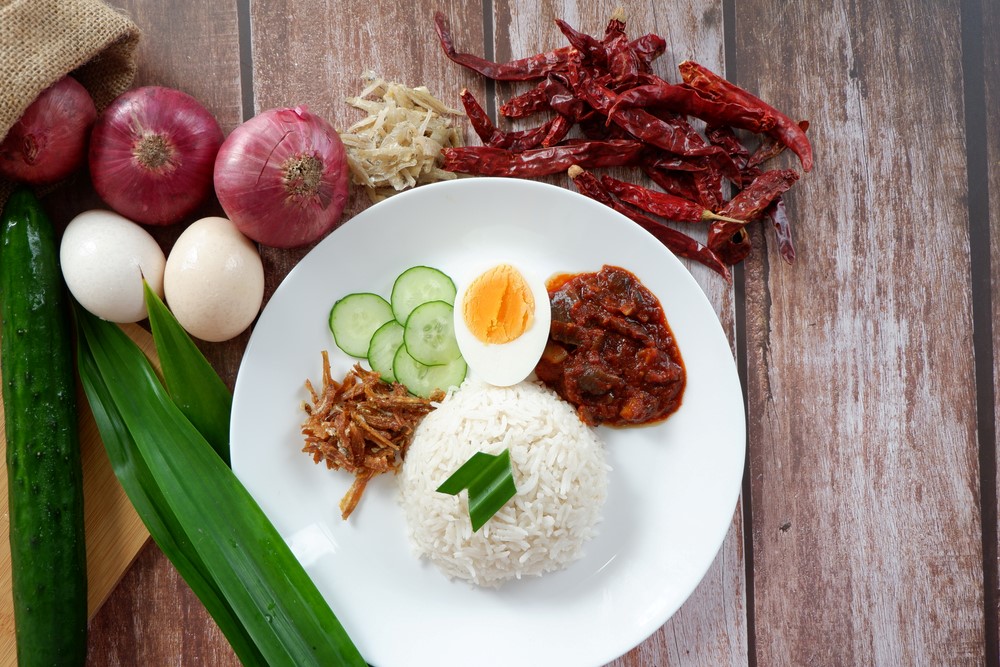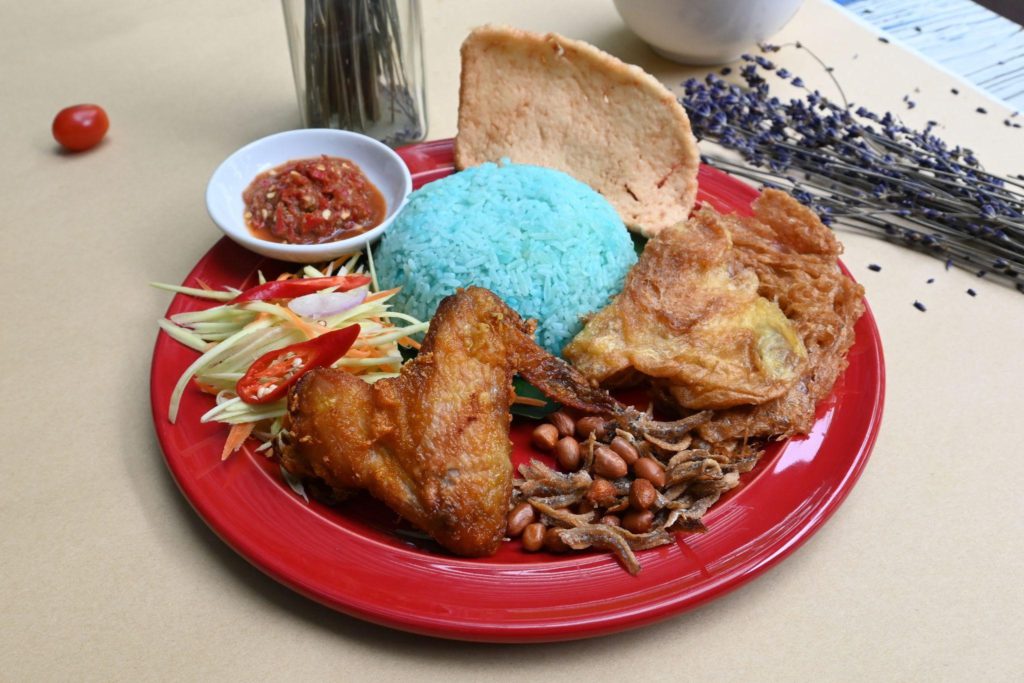Where Did Nasi Lemak Come From?
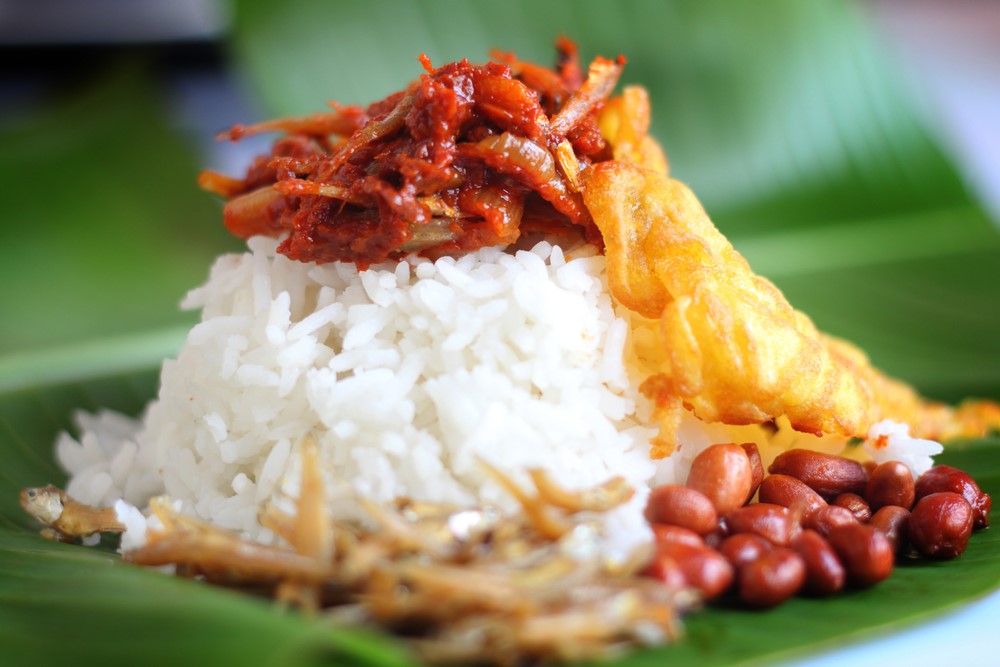
Nasi lemak is one of the most prevalent dishes in Singapore — young and old, regardless of ethnicity or class, enjoy this well-rounded and wholesome meal. We see it everywhere, from the everyday nasi lemak in hawker centres to upscaled “coconut rice with spicy chilli jam and fried anchovies” in fancy restaurants. It’s a versatile dish that has become a staple in our breakfast repertoire, while also being a favoured fare for supper. But have you ever wondered what the origins of this beloved dish are? Let’s take a deep dive into the history of nasi lemak.
The Many Origins of Nasi Lemak
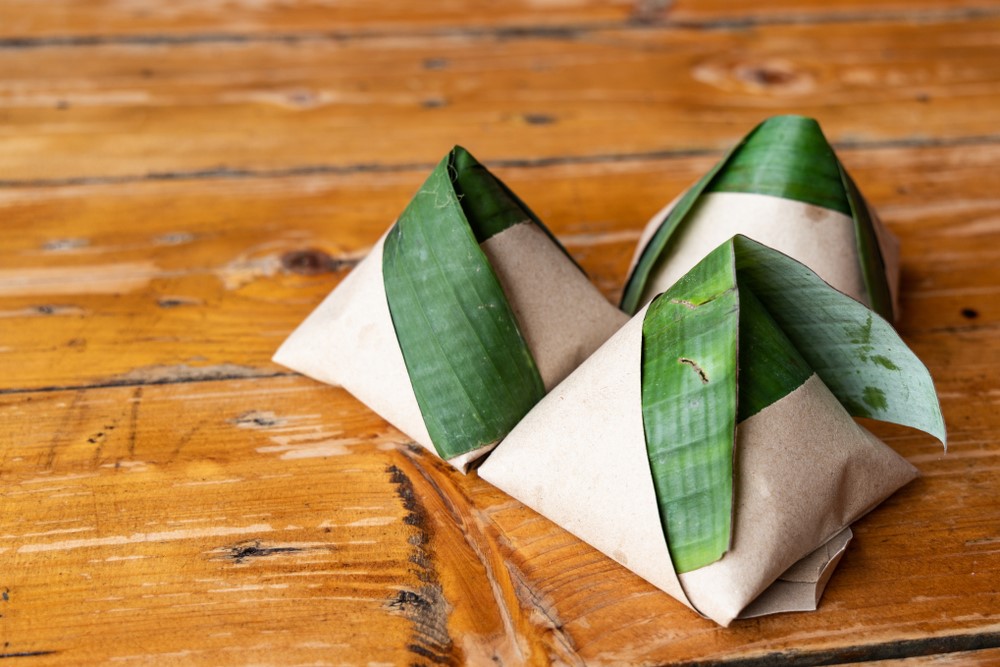
As with many origin stories of famous dishes, we do not have a single “confirmed” origin, but there have been a number of myths behind how this colourful dish came to be. What we do know for sure is that this dish has its roots in Malaysian culture and history.
1. Coconuts By the Sea
One of the most prevalent stories is the one that makes the most sense. Many believe that nasi lemak came about from the local Malay communities who lived by the seafront. All the ingredients were easily available to the farmers who lived by the ocean, and the dish is a lovely balance of something from the ocean and something from the hills.
There were coconuts from the beach, anchovies from the sea, and kangkong and other vegetables from the fields, all coming together to make a nourishing, filling dish, perfect for the hard day of work ahead on the fields. The story also goes that the meal was wrapped up in banana leaves and taken to the fields, which is where the dish gets its classic look from.
2. An Accidental Spill
We also have an origin myth that is more anecdotal — the story goes that in a small village in Malacca, there lived a widow and her daughter named Seri. Since her husband’s passing, the widow had to work to provide for her little family, leaving the young daughter to do the cooking.
One day, as she was cooking a meal for her family, Seri accidentally spilled some coconut milk, right into a boiling pot of rice. When the widow returned home and tasted the fragrant, creamy rice, she said to her daughter: “Apa kau masak ni, Seri?” (What did you cook, Seri?). To which, Seri replied, (a little cheekily), “Nasi le, Mak!” (Rice, mother!).
3. The First Written Evidence
Origin myths aside, the first known written account of nasi lemak actually comes from the book titled “The Circumstances of Malay Life”, originally published in 1909 by Sir Richard Olaf Winstedt, a British colonial administrator and scholar. He mentions that “the Malay cook” will boil the rice in coconut milk for festivals and marriages, noting down that this dish is called “nasi lemak”. Other early appearances include a newspaper article in The Straits Times from 1935, which lauded the nasi lemak from the Sunday Market at Kampong Baharu in Kuala Lumpur.
Nasi Lemak Through the Years
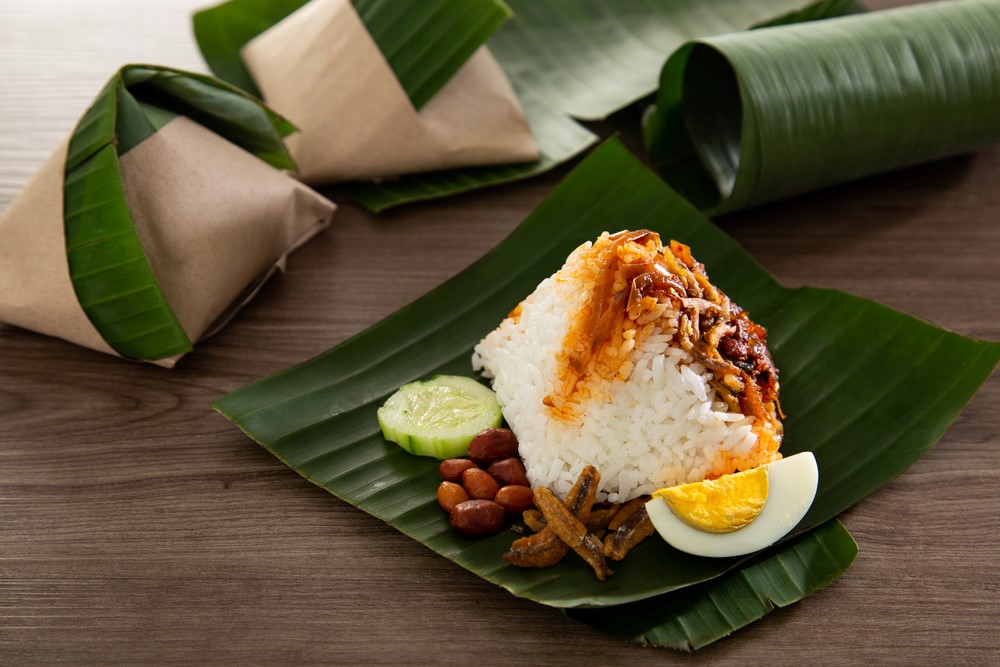
The humble nasi lemak, which began as a peasant dish meant for farmers, has not stopped evolving through the years. What began as simple fare of rice, ikan selar or ikan bilis, kangkong and sambal has seen many changes over the years.
Back in the 1970s, this famous dish was sold in small packets of rice wrapped in banana leaves for just 30 cents, peddled door-to-door by travelling vendors. Since the 80s, however, this beloved recipe has evolved to include the set meal accompaniments we know and love — the fresh, crunchy cucumber slices, crispy chicken wings, or a fried egg! There are even alternatives to the rice — some stalls tout nasi lemak kukus, which is steamed instead of boiled, while others offer green or blue rice as a novelty!
Even till now, nasi lemak continues to evolve, with every cook adding a unique flair. Our very own Chef Nolee is no different — taking nasi lemak to a whole new level with her innovative recipes with a twist of Thai!
Try our fragrant butterfly pea rice, together with some of our signature Thai-inspired sides such as sambal prawn, sweet and sour chilli fish, and our iconic mango salad. Visit our restaurant at Yishun or order cheap nasi lemak delivery online today.
